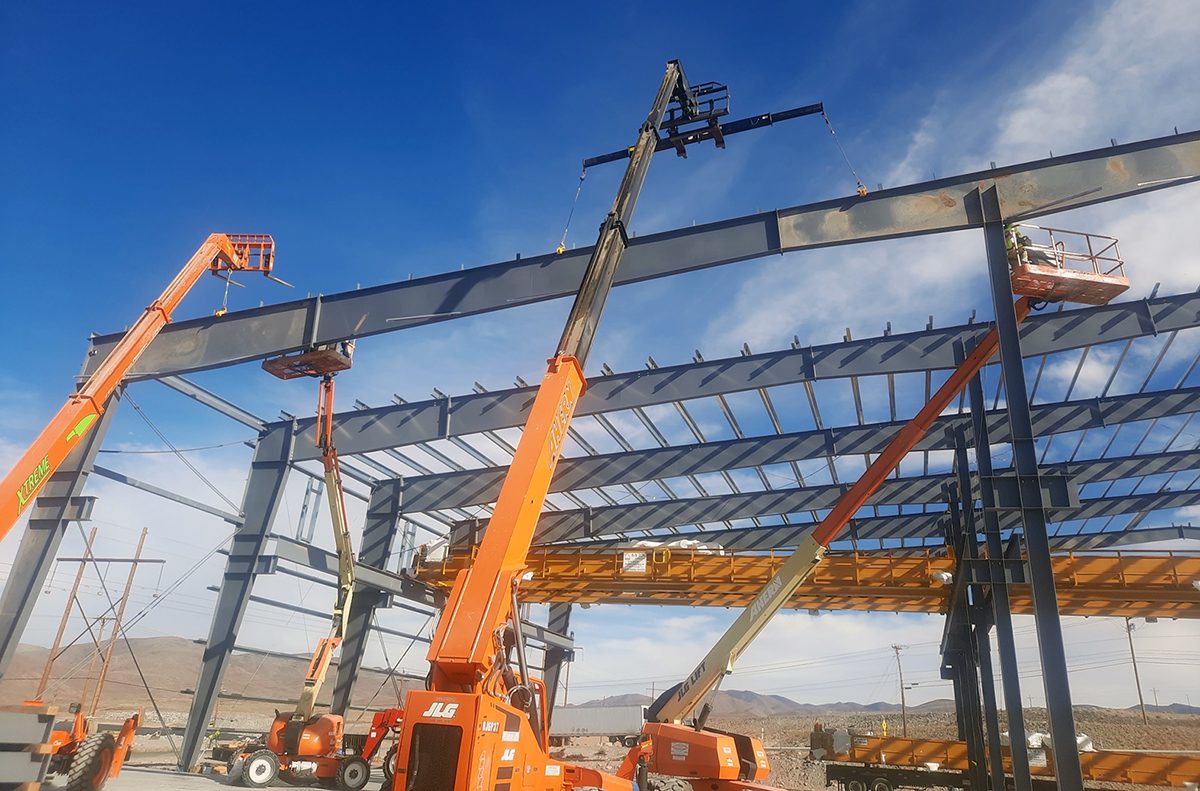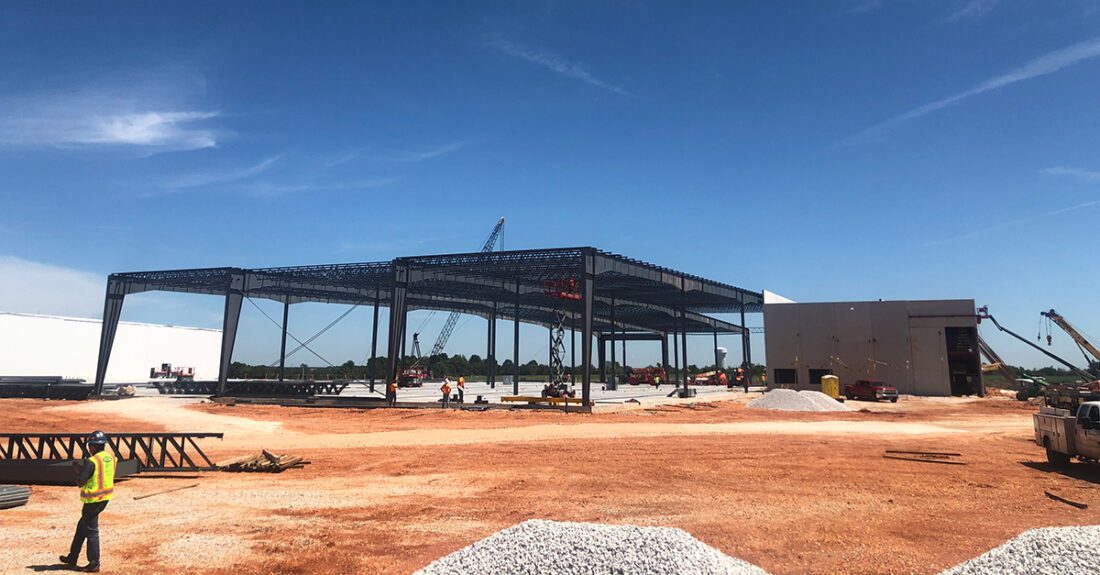On the Job – What to Know About Cranes
Here’s Some Background on The Mechanical Workhorses That Make Large Structures Possible
Wherever there’s heavy construction going on, you’re apt to see a crane of one sort or another. From compact loader cranes to the huge tower cranes that rise hundreds of feet into the air, cranes are the mechanical workhorses of the industrial construction trade. For big projects of every description, cranes do the heavy lifting—literally.
The Particular Requirements of PEMB
In the construction of warehouses, factories, hangars, arenas, greenhouses, gyms, and even churches, pre-engineered metal buildings (PEMB) provide unparalleled efficiency and versatility. In this process, building components are engineered and fabricated in advance, then transported and assembled at the job site. At that point, cranes play an essential role in project completion. They’re used to lift the steel beams and other components from their trailers and mount them precisely in the right place.
PEMB’s provide the most cost-effective solution for many projects, allowing major construction to take place in a controlled, predictable work environment. This minimizes downtime and workplace hazards while maximizing safety. But once the components reach the job site, the cranes take center stage. They can assemble a large structure within a remarkably short time.
Cranes are impressive pieces of equipment that we see all around us. But most of us know little about them—where they come from or how they work. They tend to provoke a variety of questions. For instance …

How Do Cranes Get to the Construction Site?
The answer depends on the type of crane.
Large tower cranes are usually transported in pieces and assembled at the construction site. These are known as fixed or static cranes, meaning once in place they are not moved for the duration of a project. They typically include a tower or mast that extends vertically, a jib that extends horizontally, and a trolley that can move along the jib. A block hook extending from the trolley picks up the items and moves them to the appropriate location. They are particularly useful in big projects that employ big components. But their fixed locations limit their versatility. Tower cranes are often enormous, so the entire process of transporting and assembling one can take weeks.
For most PEMB construction, however, mobile cranes are ideal. Some are permanently truck-mounted and can reach a site using their own power. Others are mounted on trailers and hauled by truck or rail. (You might see them moving down the highway in a convoy with flashing lights and signs reading “oversize load.”) Once at the construction site, these cranes can be moved around as needed to perform various tasks. They typically employ a single lifting arm that can be raised or lowered.
Mobile cranes include several different types designed for various construction needs. Telescopic cranes use compact nested arms that can extend to greater lengths as needed. That makes them convenient to transport and especially useful on sites with limited space. Crawler cranes use treads similar to a tank for use on soft, rough or marshy ground. For off-road projects, the smaller rough terrain cranes are used. These are typically single engine cranes, meaning the same engine that powers the undercarriage also powers the crane itself.
All cranes use arms, jibs or some type of extended component to lift and move objects—which leads to another logical question …

Why Don’t Cranes Tip Over When Lifting Large Objects?
The answer is that cranes use outriggers or other types of stabilizers as counterweights to maintain balance. Outriggers may extend vertically and horizontally to keep the crane stable and level. Since this is a critically important function, these components must adhere to very strict specifications.
Outriggers provide a counterweight to keep cranes balanced when lifting objects.
Who May Operate a Crane?
Whether huge or compact, cranes are complex pieces of equipment requiring special skills to operate. When you see a small human figure in the cabin of a large crane, you may assume that person has been extensively trained through written examinations as well as hours of experience in the field. Crane operators must be familiar with every aspect of their equipment, including how to inspect and repair it. Industrial construction sites are inherently dangerous, so this training puts a special emphasis on maintaining safety above all. The National Commission for the Certification of Crane Operators (NCCCO) provides certification for operators of various types of cranes as well as other equipment. And schools throughout the United States provide the training and that can lead to certification. (The NCCCO website includes a directory of schools that offer certifications, without specifically endorsing any.) Since there are many different types of cranes, each with different features and functions, operators may be certified for just one type or several.
Knowing some background about the impressive equipment you see looming above big construction sites can give you an added appreciation for what’s involved in these types of projects—and the special people who make it all possible. Cranes are a vital component in providing the buildings and infrastructure we all enjoy.



